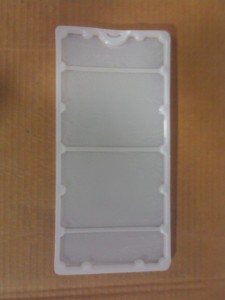Advantages & Disadvantages of Rodent Glue Traps
By Chris Williams on January 31, 2013.
 Question
Question
I hate to admit this, but we have mice in our house. Do you think using glue traps for the mice is a good idea? Are they more humane than snap traps? I don’t want the mice to suffer.
Answer
Glue traps (also called glue boards or sticky traps) have some advantages and some disadvantages. They are nontoxic, inexpensive, and don’t require any special application equipment. They’re convenient; you dispose of the mouse, trap and all.
One disadvantage to glue traps is that they do not always result in a quick death for the mouse, like snap traps do. When a mouse is caught on a glue trap, it further entangles itself as it struggles to get free. The mouse eventually suffocates to death when it gets its face caught in the glue. But there can be struggling and squealing on the part of the mouse for some time before this happens. Glue traps may not be for the faint of heart.
Like any other rodent traps, place the glue boards parallel to a wall in areas where you have seen mouse activity. Mice travel along edges and wall/floor junctions. You want the trap to be right in the middle of their usual runway so they have to step on it. Place the traps along walls near where you have seen mouse droppings, nest material, or gnawing damage. Don’t place glue traps near an open flame (like a hot water heater), in dirty/dusty places, or in extremely hot areas where the glue may run. If you’re not getting good results, you can place a dab of food in the center of the trap.
Don’t place glue traps where children or pets can come into contact with them. That can limit your placement options. You can place the glue traps into plastic or cardboard stations, or use some other kind of cover, to keep people or pets from getting stuck on them. A bait station also protects the glue trap from moisture and dust and hides the trap and its struggling mouse from view.
It can be scary if a child or pet gets a part of its body stuck on a glue trap. Just as with rodents, the more they struggle to get off the trap, the more stuck they become. Get them to remain calm. They can be separated from the glue with the application of plain old cooking oil: vegetable oil, olive oil, canola oil; it doesn’t matter. Mineral oil, baby oil, or smooth peanut butter will work, too. First, slowly pull the glue trap off of the person or pet. Dab oil or peanut butter on the glue residue and let it sit for a few minutes to dissolve the glue. Then use a dry cloth and rub the area to remove the glue. Repeat if needed, then wash with soap and water. To remove glue from clothing, place the item in a freezer. When the glue is frozen, simply peel it off.
If the idea of trapping mice isn’t your cup of tea, give Colonial a call. We can set up a mouse management program for you, giving you several control options. You should also think about having our specialists mouse-proof your home, closing up all those tiny openings that mice are using to get inside.